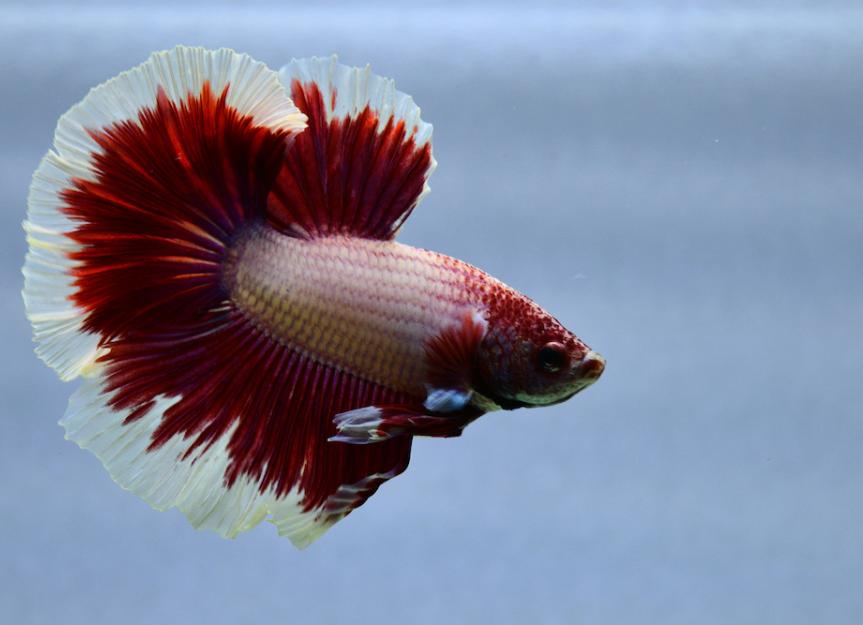Everything About Betta Fish: Understanding Their Special Needs, Actions, and the Best Practices for Ideal Treatment
Recognizing the one-of-a-kind demands and habits of Betta fish is crucial for any type of aquarist looking to give ideal treatment. betta fish. As we explore these elements additionally, the implications for both newbie and seasoned fish keepers come to be significantly noticeable, raising questions concerning exactly how ideal to suit these impressive fish in our homes.
Betta Fish Introduction
Although frequently appreciated for their vibrant colors and flowing fins, Betta fish, scientifically called Betta splendens, are complicated animals that require certain like prosper. Stemming from Southeast Asia, these freshwater fish are recognized for their territorial nature and distinct behaviors. Betta fish show sexual dimorphism, with men displaying extra dazzling shades and longer fins than women.
Their aggressive propensities, particularly amongst men, require careful factor to consider when housing them. Bettas are usually kept in single-specimen storage tanks to avoid territorial disputes. Nevertheless, they can exist side-by-side quietly with particular compatible varieties in bigger neighborhood tanks, provided the atmosphere meets their requirements.

To ensure optimum treatment, aquarists need to recognize their unique behavior qualities, dietary demands, and environment requirements. betta fish. With proper focus, Betta fish can exhibit their vibrant personalities and grow in a well-kept aquarium setup
All-natural Environment and Atmosphere
Betta fish flourish in a diverse variety of natural environments, primarily discovered in the superficial waters of Southeast Asia, including rice paddies, swamps, and slow-moving streams. These environments are identified by cozy temperature levels, usually in between 75 ° F and 82 ° F(24 ° C and 28 ° C ), and a pH level varying from 6.5 to 7.5, which is excellent for their wellness and health.
In their natural environments, Betta fish are accustomed to thick greenery, supplying both sanctuary and reproducing grounds. The visibility of plants such as floating water lilies and thick turfs not only offers defense from killers yet also adds to the oxygenation of the water, which is important for their respiratory system needs. In addition, these settings typically have areas of still water, enabling Betta fish to exhibit their natural behaviors such as bubble nesting.
Understanding the natural habitat of Betta fish is critical for aquarium fanatics. Replicating these problems-- with water temperature, pH balance, and the addition of real-time plants-- can significantly enhance the general health and wellness and long life of these exciting fish, guaranteeing they flourish in a home fish tank setup.
Social Behavior and Communications
Recognizing the social habits and interactions of Betta fish is necessary for successful aquarium monitoring. Betta fish, or Siamese combating fish, are recognized for their one-of-a-kind behavioral attributes, identified mostly by territoriality he has a good point and aggression.
Conversely, women Bettas display much less aggressive habits and can coexist in teams, called sororities, if introduced appropriately. It is crucial to check their interactions very closely, as pecking order and prominence can lead to problems. Recognizing the dynamics within a Betta neighborhood is essential; developing concealing spots and ensuring enough space can minimize aggression.
Additionally, Betta fish might also present inquisitiveness and social actions towards various other varieties. While they can exist side-by-side with specific non-aggressive container mates, it is crucial to choose compatible species to stay clear of anxiety and hostility. On the whole, acknowledging these social interactions is vital to cultivating an unified fish tank environment for Betta fish.
Essential Care Guidelines
Giving proper treatment for Betta fish is critical to their health and wellness and health. Routine water adjustments-- around 25% once a week-- aid preserve water high quality.
Betta fish call for an ideal tank size; a minimum of 5 gallons is advised to give sufficient room for swimming and hiding. Consist of designs and plants to create a revitalizing setting, but stay clear of sharp things that might harm their fragile fins.

Last but not least, make sure the container is equipped with a filter to maintain the water tidy, yet make use of a mild filter to stay clear of strong currents that can stress the fish. By adhering to these crucial care guidelines, owners can promote a healthy and vibrant Betta fish.
Common Health Issues and Solutions
In the care of Betta fish, understanding of typical wellness concerns is essential for keeping their well-being. To treat fin rot, enhance water conditions and consider using a broad-spectrum antibiotic.
An additional common ailment is ich, a parasitical infection defined by white areas on the fish's body (betta fish). Therapy involves raising water temperature and including aquarium salt to the tank, as this can aid remove the bloodsucker
Swim bladder disorder is also frequently observed, bring about buoyancy issues. This condition may emerge from overfeeding or irregularity. A fasting period of 24-48 hours, complied with by a diet plan of blanched peas, can provide relief.
Last but not least, bettas may struggle with velour illness, suggested by a gold dust-like look on their skin. Treatment typically requires medication especially developed for external parasites, along with boosted container hygiene.
Regular surveillance of water criteria, maintaining a tidy setting, and providing a balanced diet plan are vital safety nets. By dealing with these health and wellness issues immediately, Betta fish can lead much healthier, much more vibrant lives.
Final Thought
In summary, successful betta fish care calls for an understanding of their unique needs and actions. Routine monitoring of health and wellness and water high quality, along with a well balanced diet plan, contributes to the longevity and vibrancy of betta fish.
Comments on “Betta Fish Life-span: How to Guarantee Your Betta Lives Longer”